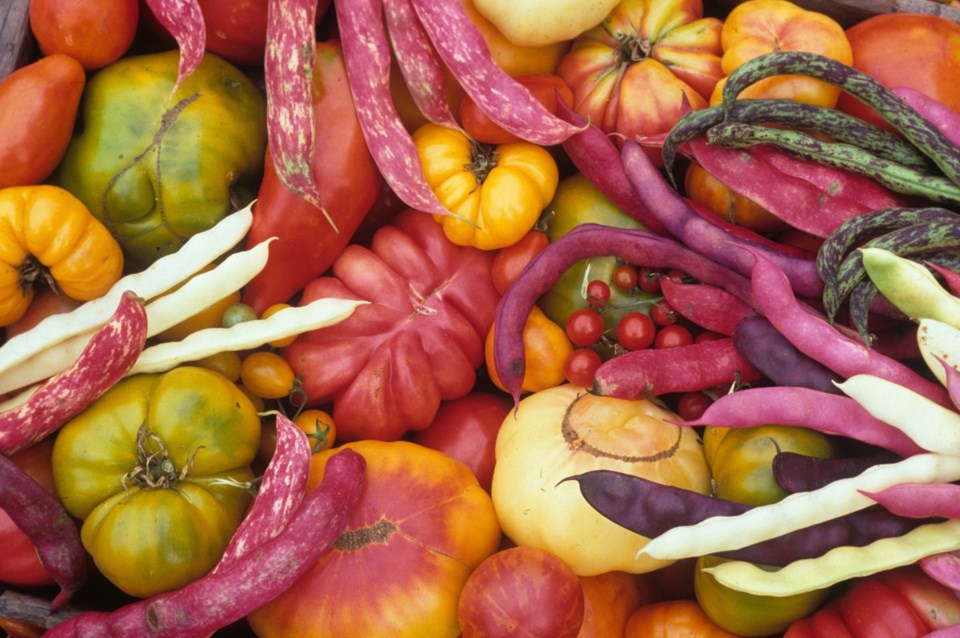One of the first things that is important to consider when storing produce, is to ensure that anything you are putting away is of good quality. Do not wait until the last moment to prepare for winter as it is important to ensure you are putting food away at the peak of quality. When harvesting your produce be careful not to break, nick or bruise what you are picking. Compost or consume quickly any product which is not in the optimum shape for storage. Any storage facility should be cleaned before storing any products and should be free of any potential rodent infestations.
Different vegetables require different storage conditions. If we are storing crops which are not being processed, then temperature and relative humidity (RH) are the main considerations of storage. There are three basic types of storage. Cold and dry (0 to 5°C and 65% RH); cool/cold and moist (0 to 10°C with 95% RH); and warm and dry (10°C and 60% RH).
Please note that these are optimal conditions for storage and any temperatures or humidity that are different from these optimal conditions then your shelf life will shorten. Our basements are generally cool and dry during our colder months and our home refrigerators can be considered cold and dry. Putting vegetables in perforated plastic bags will give a good short-term storage option for those that require cold and moist conditions. If you are lucky enough to have a root cellar, then you can likely easily store potatoes for the entire winter and beyond. Do note that any type of storage does need to provide ventilation as the vegetables are still respiring.
Apples store best in the dark at a temperature just above freezing. A covering of perforated poly will help to prevent shrivelling. As apples exude ethylene gas ensure you do not store them with leafy green or cole crops as those crops are damaged by exposure to ethylene.
Carrots, cabbage, beets, parsnips, new potatoes, peppers, cantaloupe, watermelon, beans and rutabagas like cool/cold, moist conditions with good ventilation. Ensure that these crops go into storage when they have dried thoroughly. Beets, parsnips, carrots, cabbage, beans, peppers and rutabagas will lose moisture readily so cover them with perforated poly. They do well at the bottom end of the range at 0 to 5°C. Potatoes will keep the best quality if they are stored at about 4°C when mature. Tomatoes like to be stored a bit warmer at about 10 to 15°C. All of these vegetables should be stored in the dark.
Garlic and onions prefer cold and dry storage conditions. If you happen to be harvesting seed for next year, most seed will store best if it has matured appropriately, cleaned and then stored in cold, dry conditions.
Peppers, pumpkins, squash and sweet potatoes should be stored in warm, dry conditions
For any produce that you are processing, it is necessary to blanch them before freezing. This blanching process means that you plunge the vegetables into boiling water - for just a tiny bit of time and then immediately immerse in an ice bath. There are specific guidelines for the length of blanching time. Blanching will stop the life of the products which means that respiration has stopped and following this process will ensure you keep the maximum amount of colour and nutrition.
Hope you have a great harvest!
Hanbidge is the Lead Horticulturist with Orchid Horticulture. Find us at ; by email at [email protected]; on Facebook @orchidhort and Instagram at #orchidhort. Tune into GROW Live on our Facebook page or check out the Youtube channel GROW
Don't count on social media to deliver your local news to you. Keep your local news a touch away by bookmarking the News-Optimist homepage at this link.
Here's why you should bookmark your favourites.
Subscribe to SASKTODAY.ca newsletter to get our daily news to your inbox.




